Remember When We Fixed Iraq?
“On May 1, 2003, Bush became the first sitting President to make an arrested landing in a fixed-wing aircraft on an aircraft carrier when he arrived at the USS Abraham Lincoln in a Lockheed S-3 Viking, dubbed Navy One, as the carrier lay just off the San Diego coast, having returned from combat operations in the Persian Gulf. He posed for photographs with pilots and members of the ship’s crew while wearing a flight suit. A few hours later, he gave a speech announcing the end of major combat operations in the Iraq War. Far above him was the warship’s banner stating ‘Mission Accomplished.’ Bush was criticized for the historic jet landing on the carrier as an overly theatrical and expensive stunt. For instance, it was pointed out that the carrier was well within range of Bush’s helicopter, and that a jet landing was not needed. Originally the White House had stated that the carrier was too far off the California coast for a helicopter landing and a jet would be needed to reach it. On the day of the speech, the Lincoln was only 30 miles (48 km) from shore but the administration still decided to go ahead with the jet landing. White House spokesman Ari Fleischer admitted that Bush ‘could have helicoptered, but the plan was already in place. Plus, he wanted to see a landing the way aviators see a landing.’”
— Every time I am surprised or discouraged by how surreal things seem now I remind myself that life was just as crazy even before George W. Bush broke America. Anyway, happy anniversary.
The Best Person In The World?
UM MARILYNNE ROBINSON IS SPEAKING TONIGHT AT THE CUNY GRAD CENTER. This is slightly difficult for all of us, as there are actually a number of other awesome things happening.
"Moby Dick": The Game
by Noah Davis
They created the project with Andy Kopas, Mark Perloff, and John Kauderer. Today it went live for fundraising on Kickstarter, with a goal of $25,000. The game mechanics combine luck and skill, much like a 19th century whaling hunt. Sailors die constantly, casualties of stoved boats, whale charges, and other tragedies. The game culminates in a battle against the White Whale. It’s brutal, smart, and strangely endearing.
Obviously, I had some questions.
Originally, this was going to be a video game. Why isn’t it?
Tavit: We first started talking about adapting Moby Dick into a video game two or three years ago. I worked in the industry making TripleA games, and EA had just released “Dante’s Inferno.” We were both super passionate about Moby Dick, and we loved the idea of bringing the epicness of Melville’s work into something that you could hold and interact with.
Joel: I was really into the idea of the open world. In the video game, you would run the narrative of the book, and then you would enter this nexus of the ocean. But we realized that no one would put $20 million behind that because the crossover of the hard-core gamer to the hard-core literature enthusiast basically doesn’t exist.
The circles of “high-concept card game player” and “epic novel reader” are probably much closer to concentric.
Joel: Yeah. And a card game has a more classic feel.
Tavit: We had been having late-night jamming sessions talking about the video game. We were sitting around one day with our other partner, Andy, and he suggested a strategy card game. It was like a light bulb switched on in all of our heads. It felt right. The card game is an anti-video game. It’s incredibly literate. It’s very, very wedded to the concept of the literature that it comes from, which has been Joel’s huge undertaking. But it works. The pacing and the social aspect of playing with your friends is kind of like a book club or a reading club.
Joel: It was also more attainable. When we were talking about making a video game, Tavit said he knew the perfect guys to make the water, but it would cost like $4 million or something absurd. Now, we can get art that really pops because there is so much amazing documentation from that time period. We’re using daguerreotypes, ambrotypes, and other old photo processes. For the most part, it’s public domain. We licensed some images through agreements with universities.
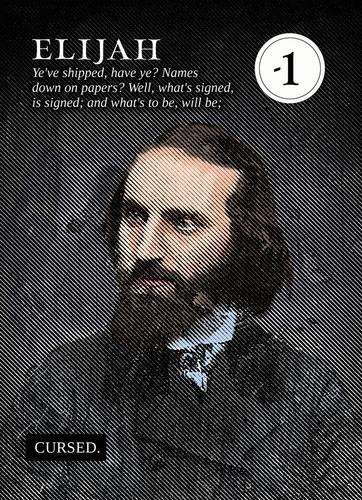
Where did you get the art?
Joel: About 20 percent is coming from the New Bedford Whaling Museum. They are excited. They are going to have the game in the gift shop. That’s cool because they have the best collection.
You spent a lot of time trying to be faithful to the text and spirit of the book. Are you worried that will keep people who haven’t read it away?
Joel: Absolutely. Everything gets checked against the book at every step. We would have rule conversations and there would be an impasse where I would say, “it cannot be this way [because it wouldn’t make sense in the Moby Dick universe].” Some rules make the game so esoteric, and people who haven’t read the book will ask why.
Tavit: We worry that it won’t be applicable to people who haven’t read the book, but I’m learning that the fundamentals of the game create a space for exploring the concepts in the book. Reading it is always going to be the best way to take it in, but the game can help. This is a bit of an apples to oranges comparison, but when Guitar Hero came out as a video game, people connected with the songs that were in the video games in a very different way because it was interactive. I was listening to music out of the game that I wouldn’t have if I hadn’t jammed on it in the game. In that same way, we’re hoping that with this project, those weird esoteric rules become questions in peoples’ minds and pull them closer to the text.
I can see how those rules would set the entry barrier higher, but maybe ultimately make it more rewarding if people stuck with the game.
Joel: Melville’s whole project was to explain every little detail to people who had never been whaling. That’s what’s so hard about the book. There are huge sections of it that explain things like what the rope does in detail. And it’s really, really important that you know exactly what it does because it really matters later. Ishmael, as a character, disappears. He’s just describing the scene. Melville wants to put you in the whale boat. A game is the perfect way to put you in a whale boat and to make you feel those feelings.
Building a gaming system, especially one this complex, seems like an impossible task. How did you do it?
Tavit: It was painfully slow. We’ve been working on this for nine months. It starts out with genial, 50,000-foot conversations about what type of game it is. It’s a card game, but do we need a board? We’d throw concepts at the wall. We tried to get it to a playable prototype, and then we added and subtracted features. We’re in the third full-on version of the game now. There have been elements that have carried through all of them, but it’s really a matter of creating features, testing features, and seeing how those mechanics interact with each other. We had one really cool working version of the game but there was a moment where we realized that we weren’t communicating with the sailors. There was no feeling. Without that identity, we lost the highest part of the concept. That’s when we revised. We always knew that the goal of the game was to be the survivor, not the winner. Players don’t win this game; they simply survive it. That had to stay consistent.
Joel: No one was going to kill Moby Dick.
Tavit: No way. Moby Dick always kills you.
Joel: We all would have walked out. There was nobody pushing for that.

The gameplay is totally brutal. Characters are constantly dying, which is frustrating but I suppose pretty consistent with the reality of whaling?
Joel: There are highs and lows. That’s one thing I love about it. It really is fateful. There are times when you are riding high and nothing can stop you, but then in the blink of an eye, you’re so low. But then you’re back again. It swings violently. It really is life on the sea.
Tavit: It’s really interesting to be working on a game that is based on something that has such a strong intellectual property. Everyone knows Moby Dick, so we get immediate reactions. Either “That’s really cool!” or “That’s really boring.” If we can create the same dialectic split that Melville did with his polarizing work I think we’ve succeeded, at least in the high-concept sense.
Joel: We talked a lot about softening the bottom. The game is devastating. It had to be devastating. We all agreed that it needed to be very, very difficult, but we rounded the bottom so you always take your shot. Because why not? If you’re brought low, you’ll be back before you know it. That way, it’s fun. When you succeed, it’s triumphant, and when you fail, it’s desolate but you’re right back to succeeding again.
Tavit: One of the core concepts of the game design was that there shouldn’t be too many times when not all of the players were invested in what was happening. There might be a time where not everyone is controlling their actions, but most of the things that happen in the game affect the entire crew. It’s definitely competitive, but there’s a cooperative nature to it. In the game, we are all sailors aboard the Pequod and we all have a linked fate, which is doom. But along the ride, there are so many opportunities to help your fellow sailors.
Why did you turn to Kickstarter for funding?
Tavit: I used to work with Killscreen Magazine, and we had a lot of success launching products that way. We learned that Kickstarter was a great platform not only for promoting your products, but also for selling them. We’ve bootstrapped our last nine months — doing the design and getting the art — but we are at a crossroads where to functionally make a game at the quality that we want to is going to require a wholesale order.
Joel: I feel like there’s a renaissance of tabletop games, and it’s a crossover, too. People go on Kickstarter looking for a new game.
Don’t take this the wrong way, but are you worried this is the most Brooklyn thing ever?
Tavit: [Laughs] No. I’m from Harlem. You can quote me on that. But yeah, it feels like it belongs in a coffee shop or a bookstore. I can totally see this being a Brooklyn hipster thing, but hopefully the IP will carry it out of there. Moby Dick is timeless.
Joel: And we’re not exploiting the fiction. There are a lot of pieces of art that get created out of Moby Dick…
Tavit: Like EmojiDick.
Joel: And I think that we have endeavored to make a lasting product. Even more than a video game, a card game won’t date itself. I think there’s something exciting about that.
The challenge of creating the Ishmael character seems especially daunting.
Joel: The big failing of any film or television adaptation is that sense of your presence. They always put Ishmael on the screen. Everyone has their own vision of Ishmael. He’s almost blurred. Peter Mendelsund wrote a piece about being able to hear Ishmael’s words more than you can see his face, and I think that applies. When there’s a film and Ishmael is walking around as the main character, it feels strange. I don’t think Melville ever intended for Ishmael to be described. That’s why I’m so excited about our Ishmael card. I think it really encapsulates the omniscient narrator. All the sailor cards are portraits, except for Ishmael’s. His is a sailor on the top mast seen from a distance. He’s an obscured figure. His in-game ability is to copy another ability. That way, he describes his fellow sailors, he never describes himself. When the Ishmael card dies, he passes to the left. He’s always there. He’s on every hunt. For all the Melvillians out there, I think that’s a signifier that we took this very seriously.
Moby Dick, or, The Card Game has funding levels from $5 to $10,000, which gets you a whaleboat.
Noah Davis (@noahedavis) fears that he would be a truly horrendous whaler. He’s not much better at the game.
New York City, April 29, 2013

★★★ Tints of clear-sky colors, yellow and blue, shone somehow through an otherwise wholly overcast morning. Drops fell, far apart, and a superficial chill covered everything — a minimum theatrical representation of April Showers, long overdue. An oil-spot rainbow lay in the middle of the street, diffusing but not washing away. A lighting rig poured fake daylight and crisp shadows over a gaily umbrellaed sidewalk table. A block away, ordinary sidewalk tables were pushed together in the shelter of an awning. Tiny round petals floated and fell, looking now like soap bubbles, now like snowflakes. The climate control in the office had lost its bearings, and the indoors grew colder and colder by the hour. By evening, the clouds overhead were no less solid, but had risen or compressed into a definite, textured surface some particular distance away.
Play A Fun Game About Bird Flu!
While we wait for the bird flu to make its way here, why not spend some time playing this bird flu game from the people who bring you wacky Taiwanese animated news.
Brian Eno, Porn Star?
“I have a friend who swears up and down he once saw Eno in a sleazy mid-70s porno loop, in a big ‘daisy-chain’ orgy scene (‘Who else had such a hairstyle back then?’ he’d ask). I always dismissed this, but maybe he was right?”
"Misfits of Science": The 80s TV Show That Only Courteney Cox Survived
by Michael Magnes
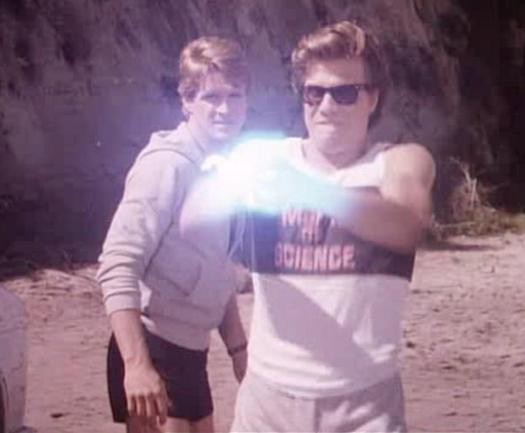
No one sets out to make bad art. If a producer approaches a young director and says, “Look here, Sonny Jim, The Hunger Games are a popular film franchise, make me one of those,” the young director is going to do his best to make the film his and craft it well. Success is just a matter of being able to work with constraints. Constraints are everywhere. Picture the college writing exercises, where the directions are like, write a three-page play using the following elements: the color red, the number forty-three, have no actors on the stage, and have the play take place over three thousand years.
The problem is that sometimes you get chewed up and spit out by commercial powers that be. Remember what happened to Barton Fink. He had to make a wrestling picture and he tried his damnedest to make it meaningful. He wrote the kind of movie he always wanted to write. The studio didn’t want that, so they ruined him, chaining Fink to anonymity.
A lot of brave art projects fall through the cracks of history, due to tragedy, capitalism or rottenness. Thanks to DVDs, Netflix, YouTube and BitTorrent, we can resurrect the fallen. (And if those fail, there’s always German DVD markets and VHS collections on eBay.)
To be fair, much over-looked and forgotten filmed art may actually have been terrible. The librarians and hoarders among us will insist nothing deserves to be lost. Lost TV shows are a direct line into a society’s deepest fears and dreams. And, just as Archie Bunker represented an angry and repressed force that was unable to deal with a changing society in the 1970s, so does the 1985 television show “Misfits of Science” represent our love of lost causes.
https://www.youtube.com/watch?v=WRZWKfeN1u4
If you are not familiar with the work at hand, here is an oral history of the show.
I first saw the opening credits of “Misfits of Science” and was… intrigued? Is that the right word? In it, a guy on TV croons about those titular “misfits of science,” whatever that means, while someone smacks the TV, and then super-hip 80s synth music comes on and you fall in love. Also then the credits announce that all the men have three names and the woman is Courteney Cox. By that point, it’s clear the show is about 1) nerds with 2) super powers. Or something. It would not be out of place on the SyFy channel today, and the special effects would be about the same.
Also the father from “Alf” is at the end of the credits, shrugging, as if to say, “It’s a living.”
From the credits alone, the show could be a colossal failure on an artistic level like The Room, or it could be some hidden gem. For all society knows now, “Misfits of Science” was the original “Mad Men.” Maybe it was better than “The Sopranos: and “The Wire” combined.
In the pilot, “Deep Freeze,” our hero, Dr. Billy Hayes, is a guy who looks vaguely like Michael J. Fox and wears short shorts.
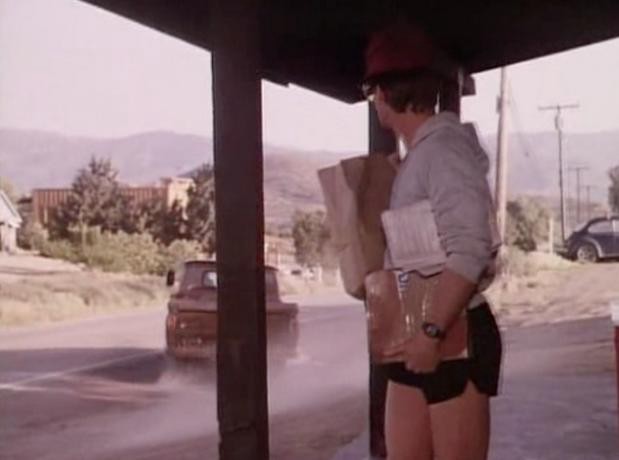
He’s a scientist at a government-sponsored think-tank called Humanidyne that has a catchy slogan: “Science to help the human condition.”
Billy studies genetic anomalies such as:
• Johnny, a guy in sunglasses, who can absorb electricity and shoot it out of his hands.
• Gloria, a teenage telekinetic Courteney Cox who once trashed a jewelry store in a mall due to her out-of-control powers.
Also there is Billy’s co-worker Elvin “El” Lincoln, played by Kevin Peter Hall, who is best known as the lead character in the Predator movies. (The Predator.) Sidebar: He died of complications related to HIV in 1991, the year after Predator 2. El is a seven-foot-tall African-American scientist. This is relevant.
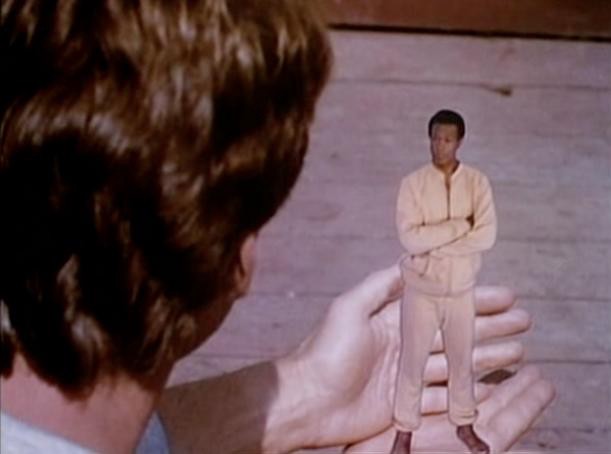
At Humanidyne El and Billy are working on a hormone that makes either really small, or really large, bunnies for military purposes, because the military is trying to weaponize bunnies. You can guess what’s coming.
The plot kicks off when a frozen man emerges from a Spinal Tap-like cocoon.
The frozen dude starts freezing people because he’s angry and shouting for someone named Amelia. It isn’t long before some guys off-screen find him and he’s at Humanidyne. Dr. Billy Hayes, being the genius that he is, guesses that he’s looking for Amelia Earhart because the frost man was frozen the year Amelia got lost. It is unclear where anyone found this information but that doesn’t matter because it’s never mentioned again. They soothe Frosty (real name Biefneiter) by force-feeding him frozen Snickers bars.
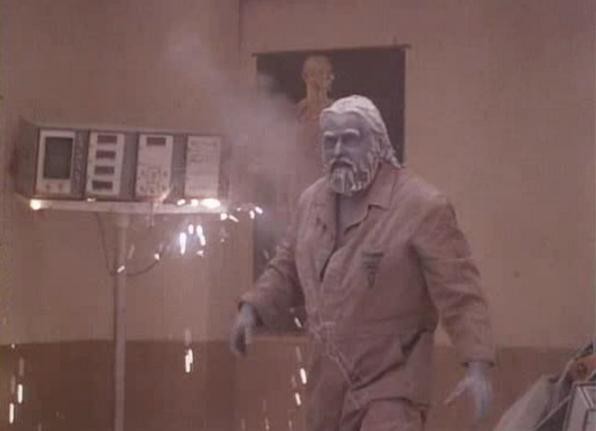
Next we learn that the government is cutting Billy’s funding. It seems that they have little interest in bunnies of varying sizes. Dissolute and depressed, Billy brings El out for a game of basketball but soon learns that El, in the cool blast of subtle 1980s-style racism, hates being his size and black, because people assume he’s good at basketball. So El injects himself with the bunny hormone to make himself real small.
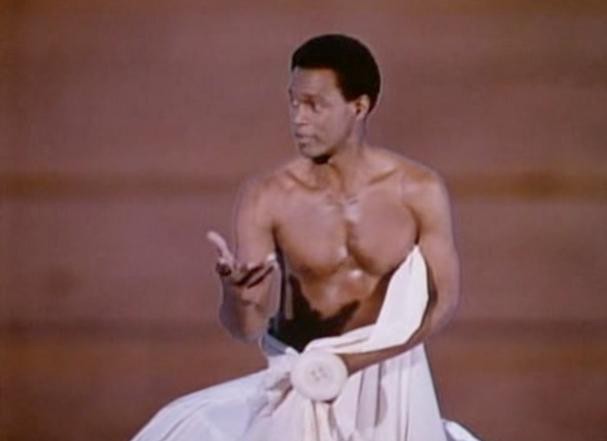
And nude.
Meanwhile, Billy’s old supervisor Dr. Momquist (or Dr. Mom, as they refer to him) was captured because he found out about a plot from Humanidyne’s evil boss. The evil head of Humanidyne is selling an unstable super-weapon (i.e., a giant laser) to the government. You see, the two bad guys have duped a Senator, played by Kenneth Mars, aka the Nazi from The Producers, into giving them money to develop the weapon. But the weapon was already built, right? It’s just unstable. Somehow the bad guys’ plan is to just transfer the weapon from a secret base, for which Dr. Mom has built the security system, to the military. They don’t want to blow anything up. They just want to have the weapon. As Kenneth Mars says, when approving the funding for the giant laser, “You know and I know that we don’t use nuclear weapons. We stockpile them.”
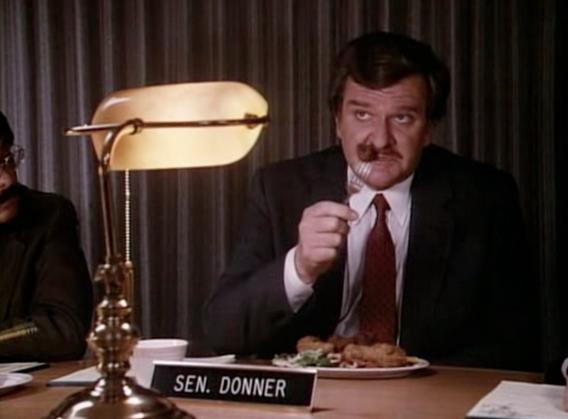
Kenneth Mars enjoys his meat while lecturing about nuclear weapons.
So Billy and El get wind of Dr. Mom being held captive so they gather Johnny…
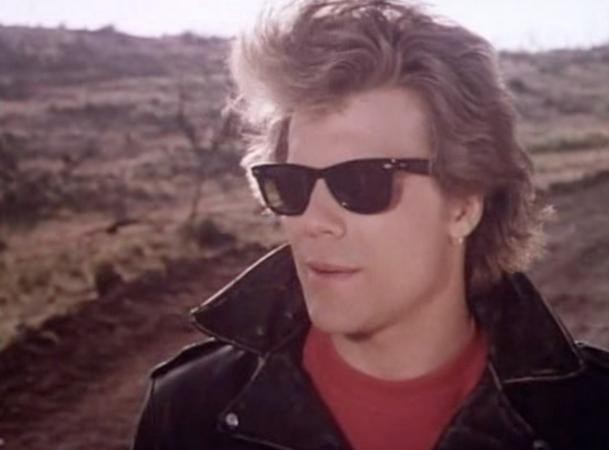
…who kind of looks like Kevin Bacon. And Gloria…
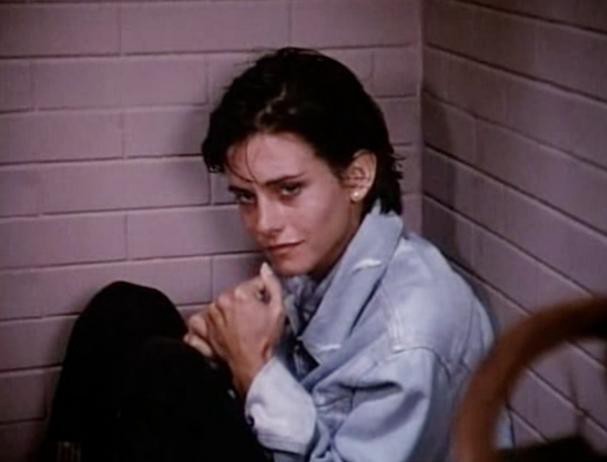
… who is Courteney Cox, pretty fresh from shooting the video for “Dancing in the Dark” (there’s probably a good joke to be made about Dancer In The Dark here) but before guest-starring on “Murder She Wrote.”
Johnny is living in a desert because water gives him a rash, and could possibly kill him.
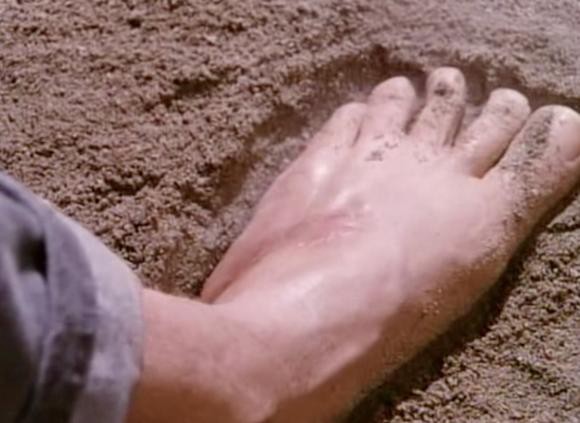
His foot gets red, kind of, when it touches water. The stakes are low and so are the special effects!
And Courteney Cox is living in a mental institution because of that jewelry store in a mall episode, with necklaces floating everywhere.
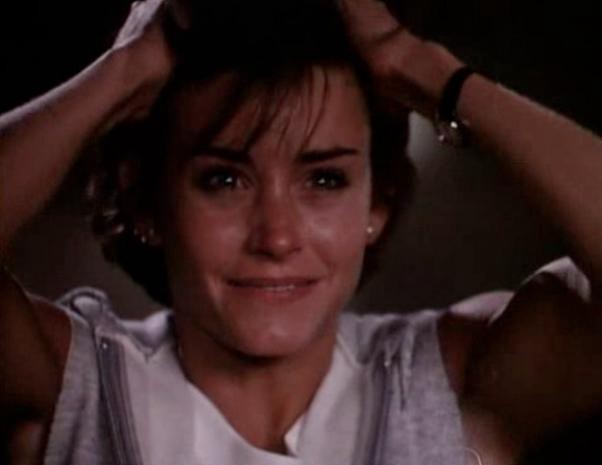
Billy, El, Gloria, Johnny and Gloria’s caseworker, Jane, all go to bust out Dr. Mom and Biefneiter the frost man. In a brilliant move to calm down Biefneiter, because Jane forgot to bring the Snickers bars, Billy gets the caseworker to pretend to be Amelia Earhart to calm him down.
Why is this frost man here? Why is he eating candy? Why did this pilot episode of a television show begin with him? He’s there because later on the misfits need him to freeze a water tunnel that Dr. Mom designed as a protective barrier to the laser super weapon that was built. You see.
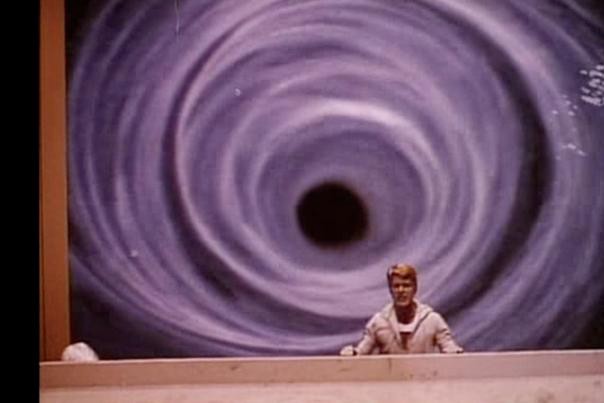
A water tunnel. Hmm. There’s this fantastic moment right before Biefneiter freezes the water. Our heroes debate whether Biefneiter can do it. You see Biefneiter (Biefneiter, Biefneiter, Biefneiter!) has to keep his body temp under 32 degrees and he’s walking around in a cold suit to keep his temp down. He needs to touch the water to freeze it and that means letting his hand out of suit.
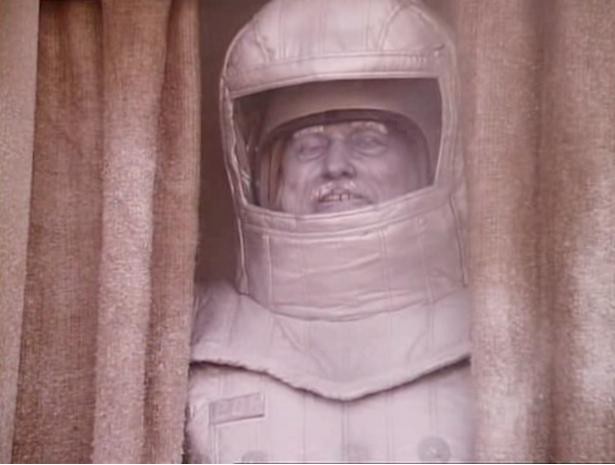
Jane is concerned. But then he does it. So you’ve got no build up to danger, sudden danger, and then nothing.
The heroes win the day and stop the laser from being transferred and Kenneth Mars salutes them and this happens.
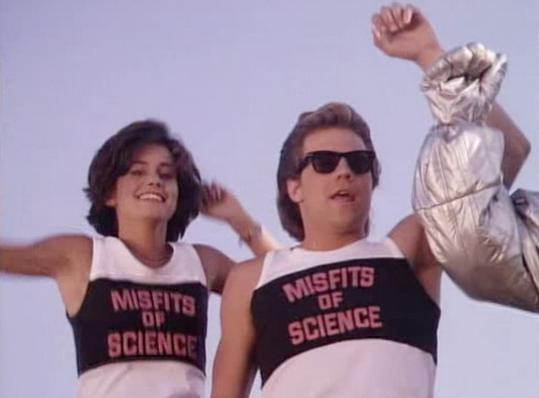
And then, they close out with a freeze frame of our heroes high-fiving each other.
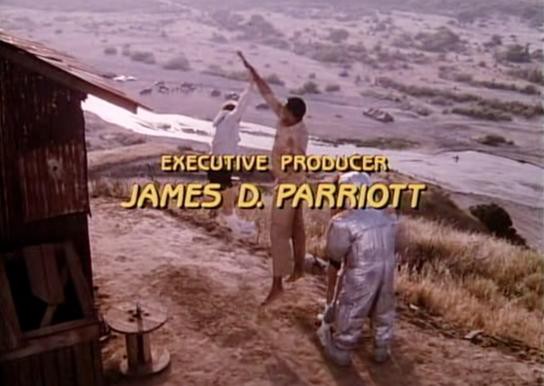
FYI, Executive producer James D. Parriott would later be an executive producer of “Ugly Betty” and “Grey’s Anatomy.” (Sidebar: It all turned out pretty well for some of the people here. Well. Not for Kevin Peter Hall, of course, and not for Dean Paul Martin, who died even sooner, in 1987, when he crashed a fighter jet. But Cox might not even be the winner here; Mark Thomas Miller, despite suffering a “disfiguring accident” in 1991, has still had what sounds like an awesome life. But yes, let’s not forget that half the cast was dead within five years of this show airing.)
So what does this show all mean? Throughout the episode, Billy keeps insisting that he’s trying to help weirdos. The tag line of the show is trying its hardest to be: weirdos of the world unite! Let your freak flag fly! The problem with that is no matter how many “Weird ‘R’ Us” signs you show, you have to let the characters be weird. But Billy, for instance, is a stock fun-loving slacker type who hits on women who rollerblade in front of him.
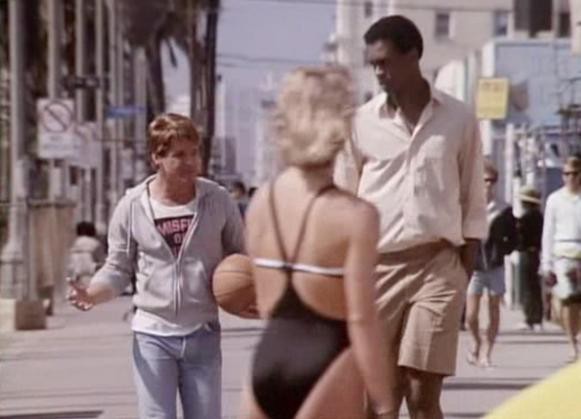
He also has a secretary who, as the media covers the misfit’s final assault on the base, switches to another channel to watch soap operas.
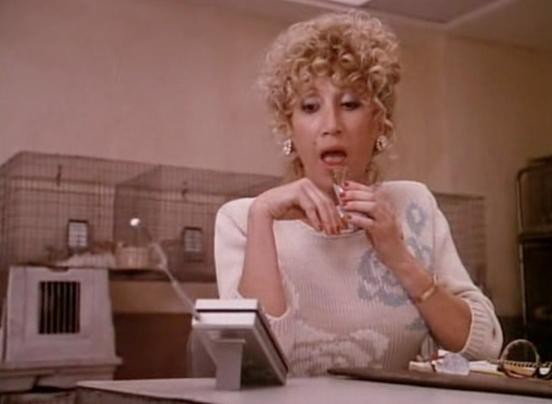
And Johnny is an angry musician and Gloria is a neurotic girl.
Here, by the way, is a choice romantic exchange between Johnny and Gloria.
Gloria: “I like listening to your music. I still do.”
Johnny, raising his eyebrow: “You actually have one of our albums?”
Gloria: “All three.”
Johnny: “Oh, a collector.”
Gloria: “I guess so.”
Apart from… that, the rest of the dialogue is all exposition explaining what tasks they must accomplish, like when they break out Dr. Mom. The misfits have to get into the locked laboratory when Elvin, astute as anyone in the cast, says, “There’s a button to open the door on the other side!” And then the camera zooms in on this for a few seconds.
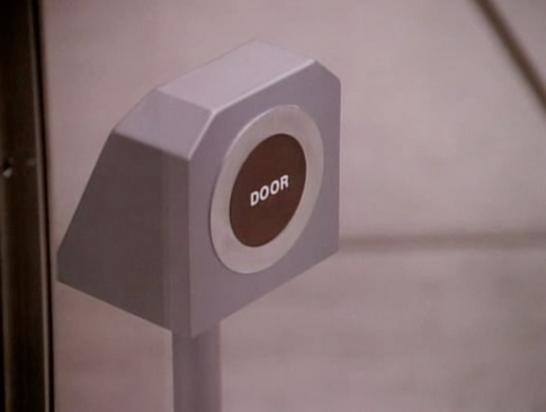
Elvin shrinks himself, repels down the other side, and opens the door. Right.
Unfortunately for time and space, the idea behind “Misfits of Science” is a good one, because it’s basically a sideways adaptation of “X-Men.” (First published: 1963.) Here are a team of outcasts banding together to protect a world that hates and fears them. But SF and superhero movies and television shows had to be campy and goofy, in the day before everything became Christopher Nolan-ized. And this was 1985. (See also: Running Man, of 1987.) High camp was the order of the day.
But that weird and 80s cheese has an appeal, particularly from here in our age of impeccable CG. It’s gross yet endearing, like Tab cola or Zagnut bars.
All the producers had to do was lower the stakes, making the characters and their insecurities the focus of the series. If someone remade this it wouldn’t be out of place next to “Psych” on USA. It would be a low-rent “Fringe.” (Also, it’s been released on DVD in Germany, so maybe there’s a big following over there?)
Finally, a few notes of things that really stick with a viewer:
• Billy’s mother either works in a beauty salon, owns a beauty salon, or hangs out in a beauty salon. This is unclear but we do get to see her faint when she sees her son on television.
• There’s a conspicuous picture of Richard Nixon in the Billy’s lab.
• As the evil general and the evil businessman watch a demo of their super laser, the general says, “Yesssssss. This sends chills up my spine. One more time.”
• Billy after being berated by his mother: “I’m a doctor, too! Doing some things here!”
• The misfits drive around in an ice-cream truck with the words ‘Sundae Fundae’ on the side
• When the chips are down, the soundtrack switches to a song about teamwork. The lyrics include: “GOT TO HAVE A LITTLE TEAMWORK.”
• When shrunk, El had a tiny little parka made for himself. This baffles Billy.
Many of those ideas were probably mistakes. Or perhaps they were just two decades too early.
“Misfits of Science” lasted for sixteen episodes, and aired in 1985 and 1986. Episode titles include:
• Your Place or Mayan
• Guess What’s Coming to Dinner
• Sonar…and Yet so Far
• Grand Theft Bunny
• Against all Oz
and
• Three Days of the Blender.
If you’re intrigued, there’s even more to learn, somehow.
Michael Magnes’s special powers are to drink coffee. He is a true misfit of science and would like a t-shirt, please.
Are Your Wrists Square-Shaped? What Does That Even Mean?
“Hand ratio, calculated by dividing hand length by palm width, was significantly smaller in [carpal tunnel syndrome] patients than controls. Wrist ratio, the depth of the wrist divided by the width at the base of the hand, was significantly larger in CTS patients.”
— Are you more likely to develop carpal tunnel syndrome? Who the hell knows? The only thing reading this article is more likely to do is make you spend the afternoon staring at your wrist and hands trying to figure out what the hell it all means. Good luck!
